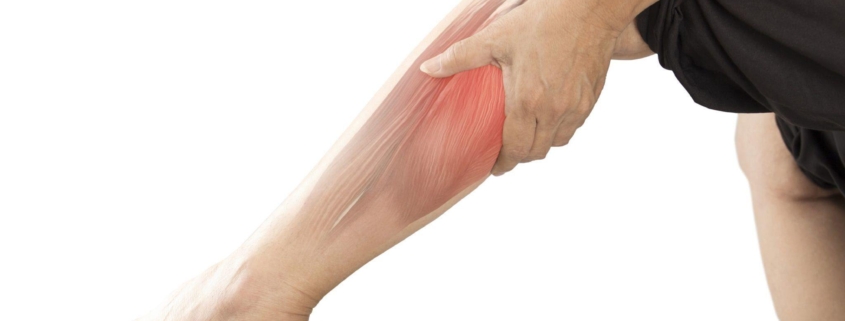
Muscle Cramps
Overview
Muscle cramps, commonly termed as ‘Charley horses’, are sudden, tight, and intense pains caused by the uncontrolled contraction of muscles. These often occur in the leg muscles but can appear in any muscle group. Uncomfortable and disruptive, these involuntary muscle contractions are a common and generally harmless condition, affecting most individuals at some point during their lifetime.
Types
Although muscle cramps can happen anywhere on the body, certain types are more common and have been categorized accordingly:
-
- True cramps represent most muscle cramp cases. They usually occur in the muscles that cross two joints, like your calf muscle.
-
- Tetanic cramps occur when nerve signals stimulate all the muscle fibers in a specific area.
-
- Dystonic cramps happen in muscles that are not needed for the intended movement, often impacting muscles in the neck, face, and hands.
Causes
Various factors contribute to muscle cramps, some of which include:
-
- Overuse of a muscle
-
- Dehydration
-
- Muscle strain
-
- Nerve compression
-
- Poor blood circulation
-
- Deficiencies in minerals like calcium, potassium, and magnesium
-
- Drugs such as diuretics and statins
Symptoms
The main symptoms of a muscle cramp include:
-
- Sudden onset of sharp pain
-
- A hard lump of muscle tissue
-
- Inability to move the affected muscle
-
- Pain that subsides quickly, within a few seconds to 15 minutes
Diagnosis
The diagnosis of muscle cramps is usually based on the symptoms and a physical exam. In certain instances, doctors might suggest blood tests or muscle or nerve studies to rule out underlying diseases.
Treatment Options
Treatment may not be needed for muscle cramps because they typically go away on their own. However, if cramps are severe, frequent, persistent, or associated with other symptoms, treatment options may include the following:
-
- Self-care: Stretching, massages, or simply waiting it out can often relieve muscle cramps.
-
- Fluids and nutrients: Staying hydrated and replenishing essential minerals can prevent cramps.
-
- Medications: Over-the-counter pain medicines, and in some cases, prescription drugs can be helpful.
-
- Physical therapy: If cramps persist, physical therapy might be recommended to learn exercises to stretch and strengthen your muscles.
Living with Muscle Cramps
The following lifestyle changes can help you manage muscle cramps:
-
- Staying hydrated
-
- Eating a balanced diet rich in vitamins and minerals
-
- Proper stretching before and after exercise
-
- Maintaining good posture
-
- Wearing supportive footwear
-
- Heat or cold therapy
When to Seek Help
Although muscle cramps are normally harmless, seek medical attention if they:
-
- Are associated with severe discomfort
-
- Are associated with leg swelling, redness or skin changes
-
- Are accompanied by muscle weakness
-
- Don’t improve with self-care measures
-
- Happen frequently
-
- Aren’t related to physical exertion
-
- Disrupt your sleep
Remember, you’re not alone. Living with muscle cramps can be a challenge, but there are vanquish measures and professional helps available.
